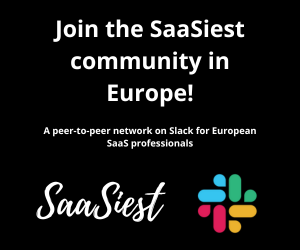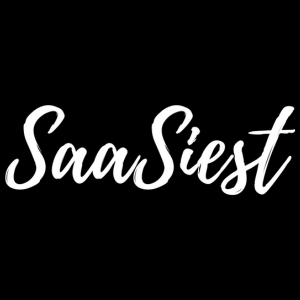Building a high-performing culture isn’t just about KPIs and frameworks – it’s about leadership, trust, and clarity. In this article, leading People & Culture executives from Europe’s top B2B SaaS companies share their most effective tactics for driving performance at scale.
From fostering psychological safety and empowering “leaders without titles” to embedding culture into everyday systems and over-communicating until clarity sticks, these experts reveal what truly fuels engagement, accountability, and long-term growth.
If you’re scaling fast and want your culture to scale with you, this piece is packed with practical insights from those who’ve done it successfully.

Caroline Haugsnes
Head of People & Culture
SmartCraft
🚀 Fuel your employees with great leadership
High performing teams don’t happen by chance, so make sure that Managers are also your best skilled leaders. They truly want every employee to succeed, and they are ready to set the direction, communicate clear expectations, and follow up on progress. They know their employees inside and out; they encourage them to step outside of their comfy box. When people grow, perform, and thrive – so does business!
🥰 Make your organization a safe space
To receive the full potential of every employee, the environment must be a safe space. People need to feel secure to make mistakes and take interpersonal risks, express their thoughts and feelings, without any fear of negative consequences. Train leaders and employees in how we can create a culture with high psychological safety, so that everyone can go far and beyond.
📣 Don’t miss out on structure
Communicate “how we do things” and “why” we do it this way. Set good routines, processes, rituals, and structure in an early phase – before scaling. Once you are in the middle of everything, you will have less time to prioritize, and things might be running ad hoc. Don’t forget to be agile (though structured!) and to involve as many people as possible once creating structures. You will win implementation time x10!

Caroline Siwerz
Chief People & Culture
Rillion
1. Don’t skip the basics. Set clear goals first
High performance starts with clarity. As organizations scale, this fundamental step is often overlooked. When goals are well-defined, measurable, and aligned with business priorities, teams understand what success looks like—and most importantly, how their role contributes to it.
Start here:
- Establish a structured goal-setting process across the organization. Keep it simple and tailored to your ways of working.
- Link individual and team goals to company-wide objectives to ensure alignment and shared direction.
- Track progress and outcomes—not just activity. Be ready to iterate as the business evolves.
2. Great performance starts with great leadership
As you scale, your leaders become the key enablers of performance. They must evolve from task managers to performance coaches—setting direction, removing blockers, and fostering accountability.
Start here:
- Train leaders in continuous performance conversations, not just annual reviews. Help them become true performance coaches.
- Equip leaders with tools to identify and address performance blockers early.
- Encourage and promote a growth mindset by celebrating progress, learning, and adaptability—not just results.
3. Let the data speak: Use engagement insights to drive performance
Employee engagement data reveals what enables—or hinders—performance. By listening to what the data tells you, you can make smarter, faster decisions that directly improve outcomes.
Start here:
- Run engagement surveys regularly to uncover trends in motivation, clarity, and enablement.
- Analyze the data to identify performance blockers—whether it’s lack of feedback, unclear goals, or low recognition.
- Act on insights quickly and visibly together with the leaders to shape a work environment that supports high performance and builds trust.

Hanna Malmsten
VP People & Culture
GetAccept
1. It starts in the mirror.
If we’re not clear on the vision, or we’re not excited about it, why would anyone else be?
People don’t follow fluffy statements. They follow people who believe in something, and believe in THEM. And if we don’t truly believe our people can deliver, they will feel that too. Instantly.
2. There are no shortcuts in recruitment.
It’s not just about what you want to build, it’s about who you want to be while building it. That identity is what people will connect with.
Only bring in people who want to be what you want to become. The people who connect with your standards, your ambition, your goals and your values will walk the extra mile. Not because you asked them to, but because it connects with who they want to be.
3. Be brave enough to be clear.
We’ve become so afraid of being “too tough” that we’ve forgotten how helpful it is to actually be honest. Clarity is not aggression. It’s support.
Saying things like:
”This pattern isn’t working, what do you need to shift it?”
”You’re better than this. I can see your potential, but you’re wasting it.”
”I believe in you, but we need to talk about this.”
Yes, it’s uncomfortable. But it’s also what builds trust. And it shows you actually care enough as a leader. Ask yourself,
👉 What’s the conversation I’m not having right now that I need to have, and why?

Eilin Gillesen
Chief People & Culture Officer
Simployer
1. High performance begins with recognizing that investing in people is what drives business results. The companies that truly succeed understand that people are not costs to control, but assets to develop. When leaders create environments where individuals can do their best work, they unlock innovation, ownership, and long-term value, the real foundation of sustainable growth.
2. The first step is to build trust and psychological safety. People perform at their highest when they feel safe to speak up, challenge ideas, and learn from mistakes without fear. Leadership sets the tone through openness, curiosity, and consistency. Trust is not soft; it is strategic. It fuels speed, collaboration, and resilience across teams.
3. The next step is to create clarity and connect purpose with accountability. Clarity ensures that everyone knows where the organization is heading and what success looks like. Purpose gives meaning to that direction, while accountability ensures that action follows intent. When these elements come together, they create alignment and commitment. Leadership is the key that turns clarity and purpose into lasting performance and growth.

Elin Filipp
Chief People Officer
Puzzel
Communicate clearly and start with “why”
When scaling fast, it’s easy to lose sight of purpose. By focusing on the “why” and building a culture of value creators, you give teams meaning and direction. Internal communication is a strategic lever for alignment and trust!
- Frame initiatives around purpose
- Give teams problems to solve, not just tasks
- Prioritize impact over output
Invest in your managers, they carry the culture
As your organization grows, your ability to scale culture depends on whether the leaders under you pull in the same direction. Managers are not just people leaders, they are culture carriers!
- Equip them with tools for reflection, feedback, and coaching
- Link development goals to values and business outcomes
- Shift from control to enablement, think “teach a person to fish”
Recognize that change, even good change, is hard
When you’re scaling, you’re solving problems. But every solution creates new tension. More structure? It helps alignment, but can feel “too controlling.” New leadership models? They bring clarity but also uncertainty. This isn’t a mistake, it’s natural evolution. Change management is about recognizing that growth is a transition, not just a strategy. Organizations develop in cycles, and people need time to adapt. Even when the change is clearly “for the better,” it can still feel uncomfortable.
- Treat change as a cycle, not a straight line
- Listen actively to resistance
- Create space for people to share concerns and shape the journey

Emmy Öhrn
HR Director
TrusTrace
1. Build Scalable Foundations Early — Structure Enables Speed
Fast growth demands stability. Setting clear people processes, structures, and decision frameworks early is what truly enables agility later. Use the right technologies, tools, and automation to simplify workflows and reduce friction — scalable systems and frameworks create space for people to focus on impact, not admin. When foundations are solid, you can move fast without losing clarity or culture.
2. Over-Communicate Until It Feels Ridiculous — Then Do It Again
Here’s the uncomfortable truth: what’s crystal clear to you is often invisible to half the company. As you scale, complexity grows — more people, more priorities, more noise. Communicate your mission, values, strategy, and goals clearly and repeatedly in different forums — all-hands, Slack or Teams, 1:1s, team meetings — until it feels redundant to you. Then do it again. Adapt your message to the right audience. When people understand what we’re doing, why it matters, and how it connects, alignment and ownership follow — and ownership drives performance.
3. Enable and Empower Leaders at Every Level
As the company grows, leaders become the bridge between structure and culture — turning frameworks into real results. Equip them with the clarity, context, and digital tools to lead confidently — not just to manage tasks, but to inspire action. When leaders communicate well, give feedback early, and build trust within their teams, alignment and accountability follow. Strong leadership brings structure to life and drives performance through people.

Brita Ohlin
Chief People Officer
Consafe Logistics Group
1. Make behaviors your north star
Define a small set of clear, observable behaviors that describe how you want people to work and collaborate — not just what you want them to achieve.
These behaviors guide how you serve customers, make decisions, and support each other.
When people know what behaviors are expected, it’s easier for them to find their place, feel connected, and identify with the culture.
Make the behaviors visible in everyday work: talk about them, give feedback on them, and celebrate them.
Why it works at scale:
- New hires instantly understand what “great” looks like.
- Managers can coach consistently across teams.
- It gives people a shared identity — a sense of belonging and clarity as the company grows.
- It turns culture into something you can measure, strengthen, and scale — your ultimate competitive edge.
2. Integrate culture into your operating system
High-performance cultures don’t live in slides — they live in systems.
Embed your desired behaviors not only into people processes like hiring, onboarding, and performance, but also into business processes:
- In projects, include cultural reflections and lessons learned.
- In meetings — add culture or customer perspectives to every agenda.
- In product and tech — build feedback loops where developers hear directly from customers.
- In your workspaces, make sure the customer is always represented and visible.
When culture lives in how work gets done, it stops being abstract and starts driving results.
Why it works at scale:
- It creates alignment across teams and geographies.
- Culture becomes part of how business decisions are made every day.
- It builds a company where people want to be — because they feel connected, seen, and part of something real.
3. Lead with authenticity — every day
Culture scales through example, not slogans.
Leaders — formal and informal — must live the agreed behaviors in every decision and interaction.
Equip them to make culture-aligned choices, even when it’s hard, and highlight those moments. Authenticity builds credibility — and credibility builds trust.
Why it works at scale:
- People follow what leaders do, not what they say.
- It keeps culture genuine as the company grows.
- It turns leadership into your strongest multiplier of performance, belonging, and engagement.
In the end:
When everything else — products, strategies, technology — can be copied, culture is what makes you stand out.It’s your sustainable competitive advantage — and the reason people choose to join, stay, and grow with you.

Eveline Van Belle
Head of People
Bizzy
Foster open and transparent communication — Be explicit about expectations and outcomes. What success looks like to you might be very different for someone else, so clarity avoids misalignment.
Hire with culture in mind — Involve multiple team members in the hiring process to reduce the risk of cultural misfits. The right people elevate each other; the wrong fit creates distraction and frustration.
Act quickly (but respectfully) on misfits — When alignment isn’t there, address it early and make tough calls with honesty and respect. Transparency benefits both the individual and the team’s growth.

Jenny Sondell
People & Culture Manager
Quickchannel
At Quickchannel, we’ve learned that culture isn’t built in strategy slides , it’s built in the everyday moments. It’s in the CEO who takes a minute to check in, empties the dishwasher, or joins the team competition with a laugh. It’s also in every leader who takes time to listen, celebrate wins, and make space for others to shine.
Those small, human gestures bring our values to life and create a feeling of trust and belonging. Culture doesn’t live in one department, it’s something we all create together, from the boardroom to the breakroom.
We make a conscious effort to lift our people and celebrate progress, whether it’s through a shoutout in Kudos Corner, a “Why We Won” story at our Friday Huddle, or nominating a Value Champ who truly embodies our values. It’s these small, consistent moments that build a culture of appreciation and drive high performance.
1. Live your values every day
Culture isn’t what we say, it’s what we do. Every meeting, decision, and conversation shows what we stand for. When leaders live the company values, honestly and consistently, people feel it.
2. Make it safe to fail and quick to learn
Great performance doesn’t come from perfection, but from courage. When people can test ideas, make mistakes, and learn fast, they grow and so does the company.
3. Be honest about what scaling means
Scaling is intense. Exciting, messy, and full of change. Help people understand that it’s part of the journey. When everyone knows the “why,” it turns pressure into purpose, and hard work into something you’re proud to build together.

Johan Oden
Chief People & Culture Officer
Mediaflow Europe AB
1. Lead with a people-first mindset, purpose and trust and results will follow.
In the rush to achieve rapid growth, it is easy to lose sight of what matters most: people. True leadership places relationships and trust above mere numbers. When individuals feel seen, heard, and valued, as well as empowered, they invest themselves fully in the mission. Create an environment where everyone knows their voice matters, and where open dialogue and vulnerability are welcomed, not just compliance. As trust deepens, extraordinary results become a natural outcome.
2. Build a culture where performance thrives on clarity and empowerment.
High-performing cultures do not happen by accident. They are intentionally created by equipping people with the tools, clear expectations, and trust they need to do their best work. Success grows where each person can confidently say:
I Will – I am motivated and take ownership.
I Know – I understand what is expected of me.
I Can – I have the skills and tools to succeed.
I May – I am trusted and empowered to act.
I Should – I feel responsible for contributing to our shared success.
When leaders strengthen these five conditions, performance becomes consistent, scalable, and focused on people.
3. Invest in people’s growth, and the organisation will flourish.
Sustainable high performance comes not from pressure, but from a commitment to learning, feedback, and personal development. When people are encouraged to stretch, experiment, and lead, they not only unlock their own potential but also propel the entire organisation forward.

Niels van der Heijden
CPO | Head of People | HR business partner
Freelance
Great performance management starts with clarity. Employees and managers should both know what “great” looks like, and that alignment has to cascade from the very top. When goals are clear and consistent, people can focus their energy on the right execution.
When underperformance is spotted, it’s important to act quickly. Clear expectations, timely feedback, and decisive steps protect the team and give the individual a chance to move forward, either to improve performance or move elsewhere.
With Artificial Intelligence being part of everyday work, emotionally intelligent leaders will stand out. Technology can surface data and insights, you can tap into knowledge you couldn’t before, but AI will not replace empathy, self-awareness, or the ability to inspire trust. E.I. is the key to high-performing teams.

Nina Elisabeth Carøe
Chief Human Success Officer
Zensai
Organizations must address three fundamental shifts in who works, where work happens, and how work gets done to restore purpose, impact, and joy to the modern workplace.
1. Clarity is the Ultimate Productivity Hack
Scaling multiplies complexity. The best antidote is relentless clarity of purpose, priorities, and expectations. High-performing teams aren’t those with the most tools or perks, but those where everyone knows why their work matters and how it connects to the bigger picture.
How: Over-communicate the “why” and “what” of work. Set crystal-clear objectives and decision rights. Regularly realign teams as priorities shift.
Why it works: When clarity is high, engagement and retention follow. In our organisation, we’ve seen that when people know what’s expected, they spend less time second-guessing and more time delivering impact. Only 38% of employees in a recent study said they have clear guidance on what’s expected. Clarity is a competitive advantage, not a given.
2. Curiosity and Psychological Safety Trump Process
Process matters, but it’s curiosity and psychological safety that fuel innovation and resilience at scale. The most adaptive cultures are those where people feel safe to ask “why?”, challenge the status quo, and experiment even if it means failing sometimes.
How: Make learning a core value. Celebrate experimentation and treat mistakes as learning opportunities. Leaders should model vulnerability and reward those who challenge assumptions.
Why it works: Google’s Project Aristotle found psychological safety to be the top factor in high-performing teams. In our context, when people feel safe to speak up and try new things, we move faster and adapt better, which is crucial when scaling rapidly. Curiosity improves efficiency, creativity, and engagement.
3. Empower Untitled Leaders and Help People Do More of What Energises Them
As you scale, leadership must become a behaviour, not a job title. The most resilient cultures recognise and empower “leaders without titles,” people who step up, drive change, and inspire others regardless of their formal role. But it’s not just about opportunity; it’s about energy. High-performance cultures help people identify and spend more time on the work that gives them energy and plays to their strengths.
How: Recognise and reward acts of leadership at every level. Offer tailored growth journeys, mentoring, and stretch assignments. Use tools and conversations to help people discover what energises them, and redesign roles or projects so they can do more of it.
Why it works: When everyone feels empowered to lead and is encouraged to do more of what gives them energy, you unlock ownership, initiative, and a sense of belonging. Companies that invest in personalised growth and empower leaders at every level see higher engagement and stronger retention.




